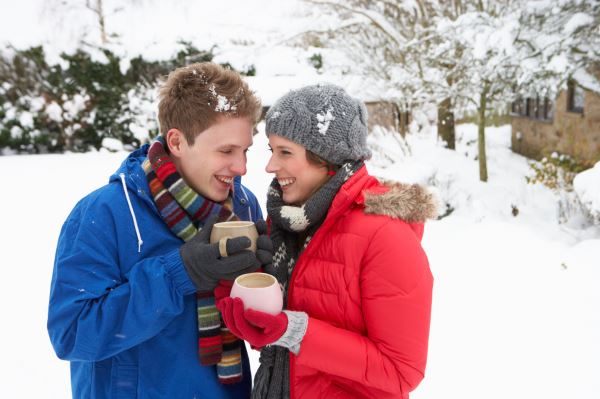
Preparation pays off. Heating accidents happen but, with a little extra caution, a safer winter can be possible.
Dr. Tait Olaveson, Medical Director of Burn and Reconstructive Centers of America at EIRMC in Idaho Falls, says he sees burns every winter from some sort of heating equipment malfunction or misuse. He wants everyone to use extra caution this winter to stay safe indoors.
“You should always consider having your heating units and fireplaces professionally inspected,” said Dr. Olaveson. “Dust buildup and gas leaks can potentially cause fires and carbon monoxide poisoning. Having your air vents, heating units, fireplaces, chimneys, and natural gas connections professionally clean or inspected can give you peace of mind.”
December, January, and February are the peak months for heating fires, which are the second leading cause of home fires, deaths, and injuries in the country, according to the National Fire Protection Association. Though not all burn or fire incidents can be avoided, some simple ways to reduce heating hazards include establishing a three-foot zone around heating equipment free of any flammable or combustible materials and never leaving fires or heaters unattended. These steps help prevent unwelcome incidents and ensures, if one happens, that you can act quickly.
“A three-foot safe zone can discourage any trips or bumps and keep flammable materials from coming into contact with the heater,” he said. “But, keep in mind, that just because something isn’t touching the heater does not mean that the item can’t catch fire.”
Other safety precautions include:
- Never leave a fire, space heater or other heating source unattended.
- Do not overload a fireplace or wood-burning stove.
- Don’t use an accelerant to start a fire in a fireplace or wood-burning stove.
- Use a screen to control sparks from a fireplace.
- Make sure ashes and other debris from fireplaces and wood-burning stoves are safely disposed far from buildings.
- Use flashlights – not candles – for emergency lighting if the power goes out.
- Always make sure fire and carbon monoxide detectors are working.
- Make sure a fire extinguisher is available.
Space heaters or portable heaters are exceedingly dangerous. They have the potential to overheat, catch nearby things on fire, burn people on contact, and tip over.
“We treat patients with burns from space heaters every winter,” he said. “I would never encourage their use but, if you’re going to use them, make sure you understand the risks associated with them and the precautions to take to lessen those risks.”
If you’re using a portable heater this winter, keep in mind the following safety tips:
- When using portable heaters, make sure that the electrical cords aren’t damaged or obstructing walkways.
- Plug portable heaters directly into wall outlets. Never use an extension cord or power strip.
- Never plug anything else into the same wall outlet as the one you are using for your space heater.
- Keep space heaters away from combustible items, including clothes, furniture, and curtains.
- Do not use a space heater to help dry clothes or other items.Make sure the heater has an automatic shut-off in case it tips over.
- Never sleep with the heater on.
Getting burned by fire or hot surfaces is not the only risk when temperatures drop. Frostbite, which occurs when body parts are exposed to extremely cold temperatures, can cause serious injury.
Frostbite has tell-tale signs to look for: the feeling of pins and needles or lack of feeling in an area, or skin that is hard and pale. Once the area has been warmed up, it may appear red and painful. If you think you may have frostbite, there are some definite “do nots” for the affected area:
- Do NOT thaw out a frostbitten area if it cannot be kept from refreezing. Refreezing may make tissue damage even worse.
- Do NOT use direct dry heat (such as a radiator, campfire, heating pad, or hair dryer) to thaw the frostbitten areas. Direct heat can burn the tissues that are already damaged.
- Do NOT rub or massage the affected area.
- Do NOT disturb blisters on frostbitten skin.
“Don’t wait, even if you don’t think it is anything serious,” said Dr. Olaveson. “The sooner frostbite is identified and treated, the better the outcome may be.”
The medical professionals at BRCA at EIRMC are trained in treating frostbite with thrombolytic therapy. If frostbite occurs or you are unsure of the severity of a low-temperature injury, find the nearest facility that offers thrombolytic therapy for frostbite. You may be given clot-busting drugs and the frostbitten area may be thawed with warm water before the need for further intervention is determined.
When out in cold weather, help prevent frostbite by remembering the following:
- Limit the amount of time you're outdoors when temperatures are dangerously low. In very cold, windy weather, exposed skin can develop frostbite in a matter of minutes.
- Make sure someone knows where you are going and when you should be there, in case of an unlikely emergency.
- If you plan to be out in the cold, stay hydrated but avoid drinking alcohol. Alcoholic beverages can cause you to lose body heat quicker than usual.
- Dress in several layers of loose, warm clothing, including undergarments that wick moisture away.
- Make sure your ears and hands are completely covered.